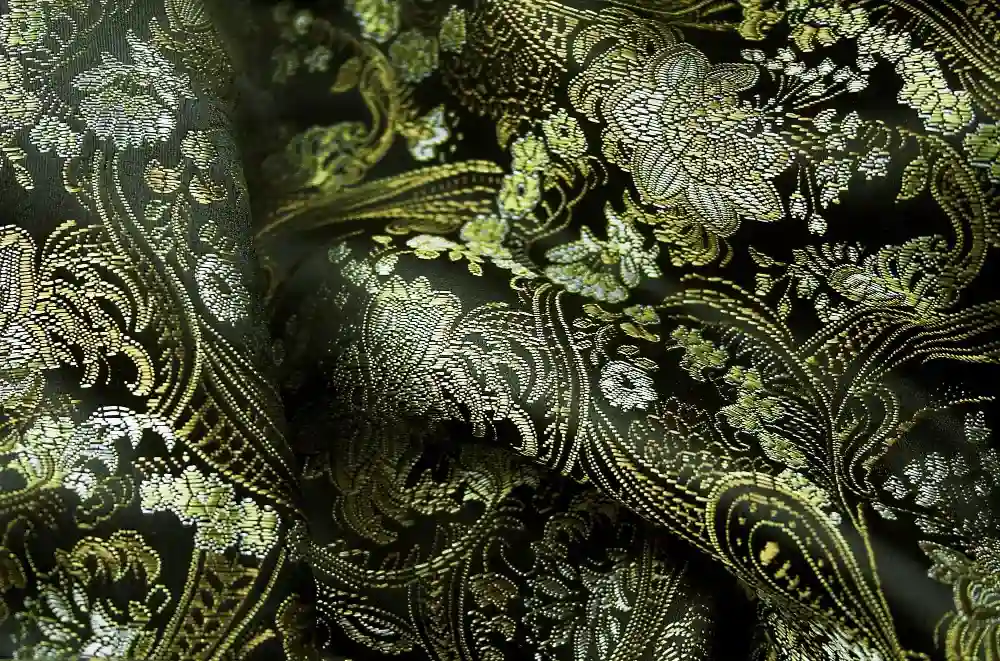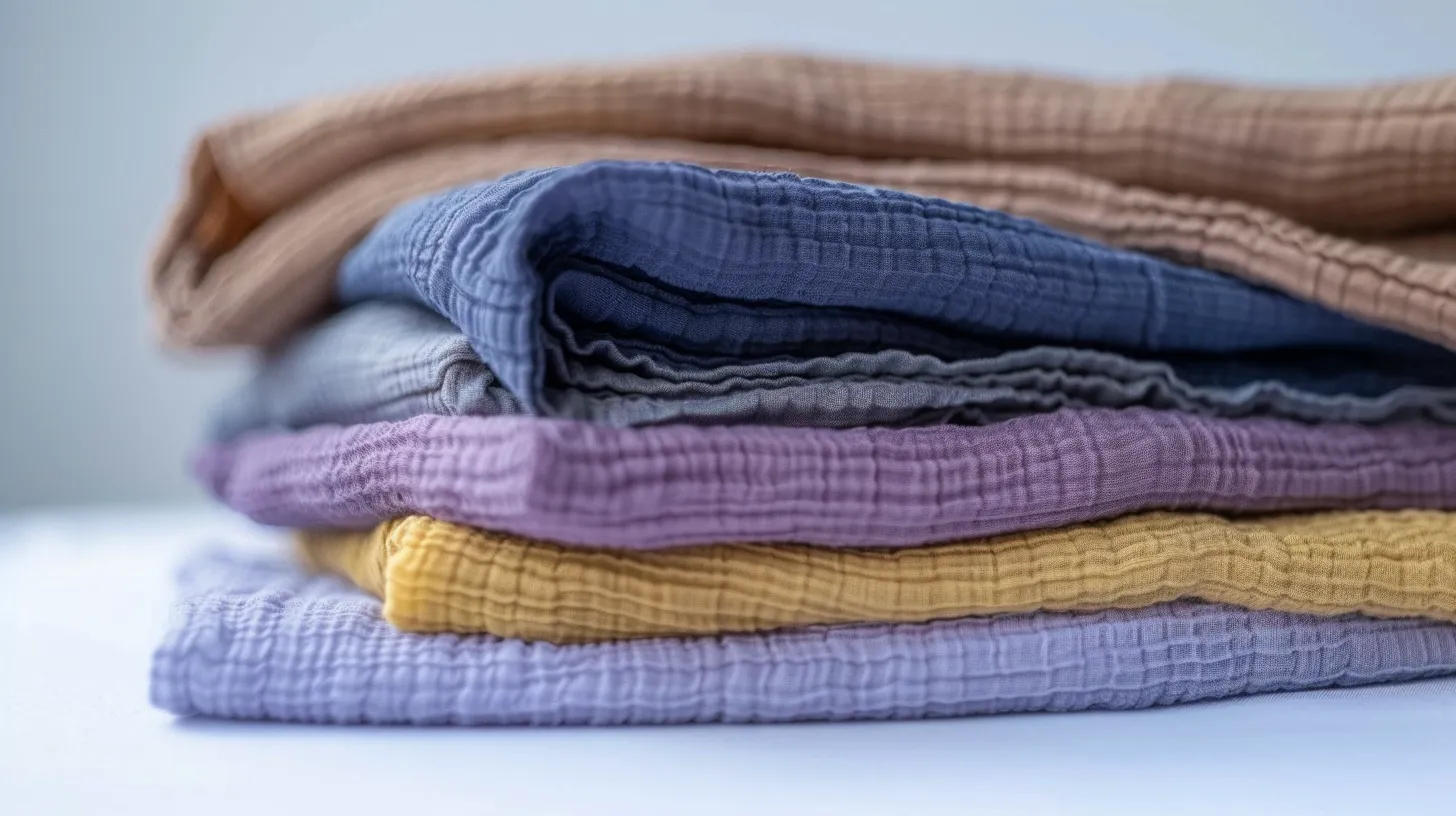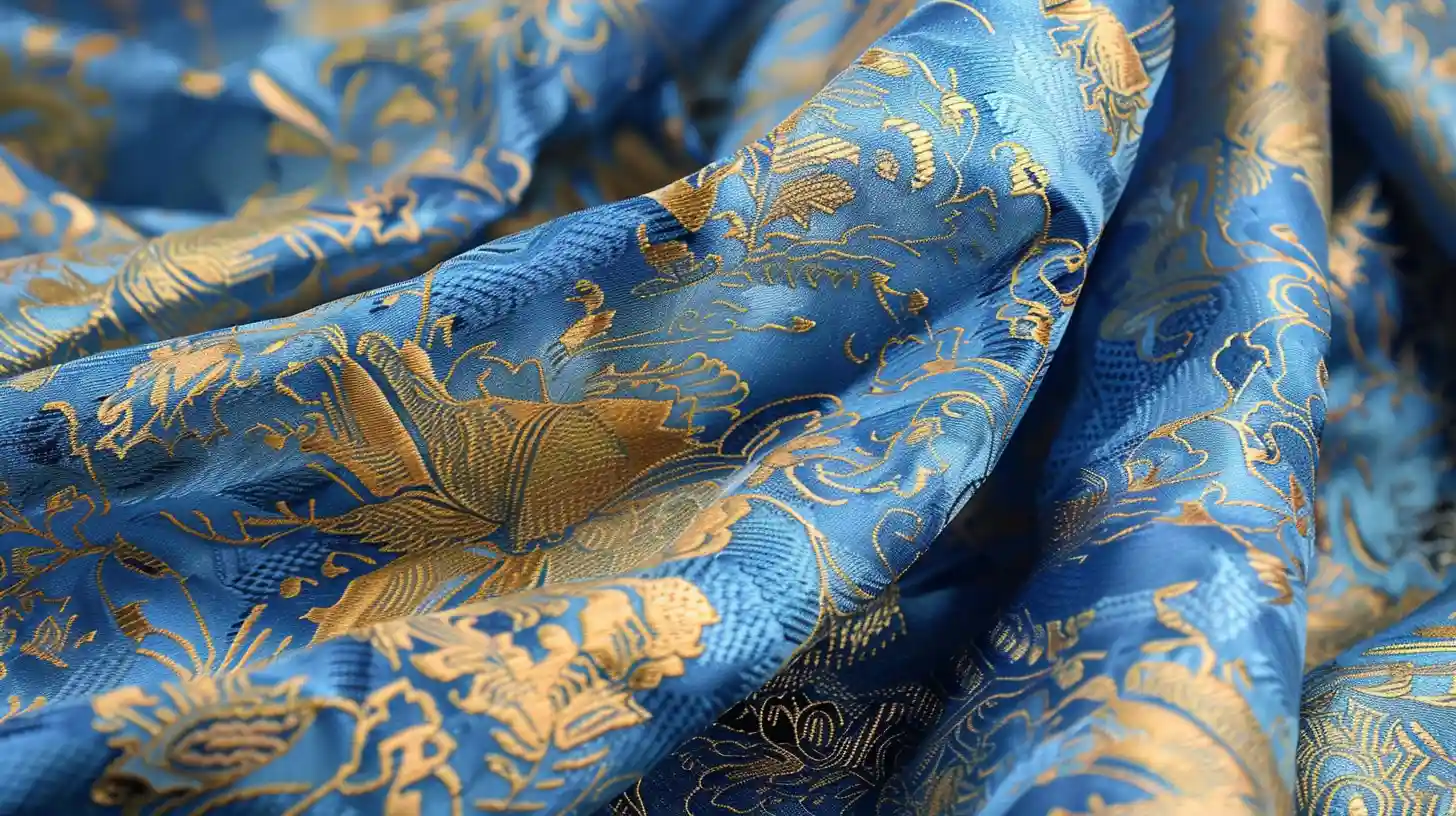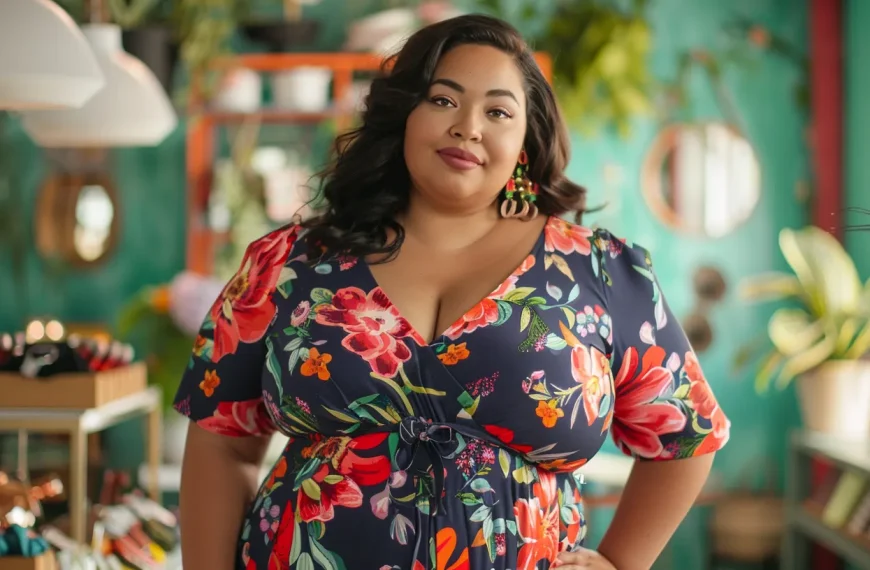Are you searching for the perfect fabric for your next project but feeling overwhelmed by the choices between brocade and jacquard? Look no further! Understanding the subtle differences between these two luxurious fabrics can make all the difference in creating a truly exceptional piece.
From the intricate patterns to the weaving techniques used, brocade and jacquard fabrics each have their own unique characteristics that set them apart. Let’s delve into the world of textiles and discover what makes brocade and jacquard fabrics so special.
Key Takeaways
- Brocade fabric is characterized by raised patterns, often with metallic threads, adding texture and luxury.
- Jacquard fabric utilizes specialized loom technology to integrate intricate patterns directly into the fabric, offering versatility.
- Traditionally, brocade emphasizes the opulence of formal wear and luxurious textiles.
- Jacquard’s intricate weaving allows for use in both clothing and home decor, showcasing its adaptability.
- Brocade fabrics need dry cleaning due to their delicate weaves. Jacquard fabrics can be either hand-washed or dry-cleaned based on the type of fibers used.
What is Brocade Fabric?

Brocade fabric is well-known for its luxurious and decorative raised patterns. It often incorporates metallic threads to create a rich, elegant appearance. This fabric is a hallmark of formal wear, gracing evening gowns, bridal attire, and traditional costumes with its ornate and sophisticated style.
The unique weaving technique behind brocade allows for these intricate, raised patterns to shine. With a touch of opulence, it sets your attire apart. Additionally, the use of metallic threads not only adds to its aesthetic appeal but also enhances the fabric’s whole texture, making it a preferred choice for those special occasions.
What is Jacquard Fabric?

Jacquard fabric stands out because of the intricate patterns woven directly into it during its creation.
A special loom with a programmed head crafts this unique fabric. The jacquard loom weaves intricate and detailed designs into the material instead of printing them.
The versatility of Jacquard fabric comes from the variety of fibers it can be made from, including silk, cotton, and synthetic materials. This diversity in materials enables its use across a broad spectrum of applications, from luxurious curtains and upholstery to high-end clothing.
The beauty and complexity of Jacquard fabric lie in the weaving process itself. It showcases the artistry and precision involved in creating these intricate patterns.
Differences in Fabric Construction
You’re about to explore how brocade and jacquard fabrics differ significantly in their construction.
We’ll examine the unique weaving techniques behind each fabric, highlighting how these methods influence their texture, weight, and drape.
Weaving Techniques Used in Brocade Fabric
During the weaving process, supplementary weft threads create the distinctive raised patterns of brocade fabric. Unlike other fabrics, these weft threads aren’t merely for structure but serve to create the opulent designs brocade is renowned for.
By integrating these supplementary threads, brocade achieves its characteristic raised patterns. These patterns not only add depth and texture but also contribute to the fabric’s luxurious appeal.
Weaving Techniques Used in Jacquard Fabric
To understand the intricacies of jacquard fabric, first examine its specialized loom technology. This technology enables the direct weaving of complex patterns into the fabric itself.
This integral weaving process enables the creation of detailed, intricate designs that can be as complex as the loom’s programming allows. The result is a fabric in which the pattern is an inherent part of the textile, not simply added on top.
This technique also permits jacquard fabric to have reversible designs. Its versatility surpasses the textured appearance of brocade fabric.
Differences in Texture, Weight, and Drape
Despite their similar decorative appeal, brocade and jacquard differ significantly in texture, weight, and drape when fashioned into garments or used in decor.
Brocade’s raised patterns give it a heavier, more textured feel. This makes brocade thicker and stiffer, leading to a more structured and firm drape.
On the flip side, jacquard boasts intricate woven patterns produced directly on the loom, resulting in a smoother texture. It’s lighter and more flexible, offering a softer, more flowing drape.
Differences in Motifs, Colors, and Aesthetic Appeal
Exploring the variances in motifs, colors, and aesthetic appeal reveals the distinct characteristics that set brocade and jacquard fabrics apart in design and pattern variations. Brocade’s luxurious look stems from its raised pattern, often accentuated with metallic threads, offering a rich texture that captures light and attention.
In contrast, jacquard’s beauty lies in the complexity of its weaving techniques, which allow for intricate designs that are seamlessly integrated into the fabric itself. While brocade enjoys a reversible quality, showcasing contrasting colors and a versatile aesthetic, jacquard fabric impresses with its detailed patterns, making it a favorite for everything from upholstery to elegant attire.
Each fabric, through its unique approach to incorporating designs, offers a special kind of aesthetic appeal that caters to diverse tastes and purposes.
Differences in Usage and Applications
You might wonder how brocade and jacquard fabrics fit into your projects, whether you’re dressing up for a special occasion or sprucing up your living space.
Traditional and Contemporary Uses of Brocade Fabric
Initially, brocade fabric was strongly associated with formal wear. Evening gowns, bridal attire, and other ceremonial garments commonly featured this fabric. The fabric’s rich textures and intricate, often metallic, designs lent an air of luxury and significance to such important attire.
While these traditional uses remain, brocade has also found its way into more varied contexts over time. It blends its historical grandeur with modern fashion sensibilities. Yet, it’s important to note that its association with formal and ceremonial wear remains strong, underscoring brocade’s enduring appeal and timeless elegance.
Jacquard Fabric in Fashion and Home Decor
Jacquard fabric’s adaptability shines through its use in fashion and home decor. It offers endless possibilities for designers and homeowners alike. This versatile material, known for its intricate patterns, seamlessly blends style and function.
In fashion, jacquard fabric elevates clothing and accessories. It allows for the creation of unique, high-end pieces that stand out. Its adaptability means designers can experiment with various looks, from sophisticated evening wear to casual chic.
For home decor, jacquard’s versatility extends to upholstery, curtains, and decorative textiles. It adds elegance and sophistication to any space. The fabric’s ability to incorporate complex designs while maintaining durability makes it a popular choice to combine aesthetics with practicality.
Differences in Care and Maintenance
Caring for brocade and jacquard fabrics requires specific attention to maintain their beauty and integrity.
We’ll guide you through cleaning, caring, and providing tips to ensure these fabrics continue to look their best.
Cleaning and Caring for Brocade Fabric
Caring for brocade fabric requires a delicate touch. Its intricate weaves and delicate fibers often need dry cleaning.
However, if you must clean at home, hand washing can be a gentle alternative. It’s crucial to test this method on a small, inconspicuous area first to ensure the water and detergent won’t damage the fabric. Always use cold water and a mild detergent, and avoid wringing or twisting the fabric to prevent damage to the intricate patterns.
Cleaning and Caring for Jacquard Fabric
To maintain the intricate patterns and delicate fibers of jacquard fabric, it’s best to opt for dry cleaning. Dry cleaning preserves your jacquard items’ unique texture and design without the risk of damage caused by machine washing.
When ironing, always press the jacquard fabric with low heat. High temperatures can flatten its distinct patterns, reducing the fabric’s charm. Additionally, pay attention to seam finishes, which are vital in controlling fraying and maintaining the structure of your jacquard pieces.
Conclusion
In conclusion, you’ve now unraveled the intricate world of brocade and jacquard fabrics.
You’ve learned that brocade boasts a luxurious, textured feel with its embossed patterns, often used in high-end fashion.
On the other hand, jacquard’s versatility shines through its complex, integrated designs. It’s suitable for a variety of uses.
Remember, caring for these fabrics requires attention to their unique needs.
Armed with this knowledge, you’re ready to make informed choices for your next project or wardrobe addition.
Learn more about fabric knowledge at Longan Craft Blog, and dive into the fabric world with Longancraft!
FAQs
Are jacquard and brocade the same?
No, they’re not the same. You’ll find jacquard’s intricate patterns woven into the fabric itself, while brocade boasts raised designs, often shimmering with metallic threads, making it perfect for more formal, luxurious attire.
How can I tell if a fabric is jacquard?
You can identify jacquard fabric by its intricate woven patterns, which result in a complex design on a flat surface. This is unlike printed or surface-level embellished fabrics.
How do I know if my fabric is brocade?
You’ll know your fabric is brocade if it has raised, intricate patterns, often with metallic threads, giving it a luxurious feel. Due to its rich, decorative appearance, formal wear commonly incorporates brocade.
How are damask fabrics related to jacquard and brocade?
A: Damask is another type of patterned fabric that can be woven using a jacquard loom, similar to brocade and jacquard fabrics, and often features reversible patterns.






